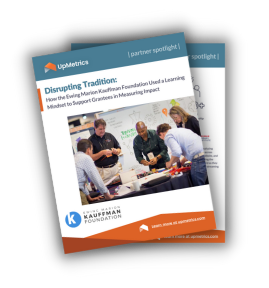Holding the Line on Equity: What Purpose-Led Grantmakers Can Do When States Are Rolling DEI Back
It’s a confusing time to be a values-driven funder.
In one breath, you’re celebrating progress: deeper commitments to racial equity, more inclusive grantmaking practices, and stronger grantee relationships built on trust. In the next, you’re navigating legislation that paints those very commitments as liabilities.
From state-level anti‑DEI mandates to legal gray zones that stifle speech and reporting, many foundations are caught in a high-stakes balancing act—trying to protect grantees, stay compliant, and still lead with purpose.
So… how do you stay values-led when the rules keep shifting under your feet?
We’ve pulled together a concrete playbook for program officers and foundation leaders who want to keep equity at the center—without putting their grantees or institutions at risk.
Step 1: Reground in Your Mission (Then Document the “Why”)
Start with your North Star: your foundation’s mission. If equity and justice are core to your identity, this isn’t the moment to get wobbly. But it is the moment to articulate that alignment clearly—on paper.
What to do:
-
Update your program strategy docs to explicitly connect your equity work to your mission outcomes.
-
Create internal language you can use to justify your investments to boards and legal counsel.
-
Use this reframing to demonstrate that DEI is not a “side cause”—it’s a methodology for achieving your goals.
🧠 Example: If your focus is maternal health outcomes in the South, equity isn’t just a value—it’s a variable impacting success rates. Make that case clearly.
Step 2: Design Your Grantmaking for Flexibility + Safety
Some foundations are pulling funding from states with anti‑DEI laws. Others are doubling down. But most are somewhere in the middle—looking for ways to protect grantees and staff without retreating.
What to do:
-
Offer unrestricted or general operating support where possible, giving grantees space to pivot based on local constraints.
-
Reevaluate your reporting requirements—are you asking for language or data that could put your grantees at risk if made public?
-
Consider a rapid-response carve-out in your budget for legal defense funds, policy shifts, or PR firestorms.
📌 Bonus tip: Fund tech infrastructure that lets grantees store and share sensitive data securely—ideally with their own control over access and visibility.
Step 3: Scrutinize Your Language (Without Diluting It)
We’re seeing a troubling trend: funders sanitizing language out of fear rather than strategy. “Equity” becomes “access.” “Racial justice” becomes “community investment.” And somewhere along the way… the impact gets watered down.
This isn’t about compliance. It’s about clarity and courage.
What to do:
-
Build a messaging guide that helps your staff and grantees speak confidently about equity in different settings (e.g., board meetings vs. public reports).
-
Use metaphor and narrative to ground abstract concepts in real community outcomes.
-
Create talking points that reclaim contested language—framed through your mission lens.
💬 You don’t have to call it DEI for it to be equity work. But you do need language that reflects what you’re really doing—and why it matters.
Step 4: Use Your Data to Make the Case
Numbers may not change hearts, but they do shift conversations. Especially with boards and external stakeholders.
The good news? You’re likely already sitting on rich data from your grantees that shows how equity-centered strategies are driving results.
What to do:
-
Centralize impact data across grantees using real-time dashboards and cohort analysis.
-
Pull both quantitative and qualitative data into your reports. Don’t just show who was reached, show how lives were changed.
-
Share stories backed by data that demonstrate how centering marginalized communities improves outcomes for everyone.
🧩 Tools like UpMetrics make it easy to surface trends, elevate grantee stories, and link equity efforts directly to measurable outcomes.
Step 5: Build Power in Numbers, Through Community
You don’t have to navigate this alone. Collaborative peer learning models (like UpMetrics’ Collaborative Cohorts) give foundations and grantees space to strategize, support each other, and build resilience together.
In these cohorts, we’ve seen grantees:
-
Develop safer impact storytelling practices
-
Align around collective messaging to reduce scrutiny
-
Share playbooks for navigating hostile political climates
-
Strengthen the data behind their equity-focused work
This kind of shared infrastructure doesn’t just lighten the reporting burden—it amplifies your entire ecosystem’s ability to move forward with clarity and courage.
Final Word: This Isn’t Just Political. It’s Personal.
Let’s be honest—no one enters philanthropy because it’s the easy path. You’re here because you care. And in this moment, caring out loud takes guts.
So yes, the pressure is real. But so is your purpose.
The goal isn’t to dodge scrutiny. It’s to stay aligned with your mission, protect your grantees, and ensure that the impact you’re working toward doesn’t get lost in translation—or legislation.
You don’t have to retreat. But you do have to adapt.
Ready to strengthen your equity-centered strategy and tell a clearer, safer story of impact?
👉 Book a demo with UpMetrics to see how our tools can help you protect your mission, empower your grantees, and back it all up with data that speaks for itself.

July 28, 2025

